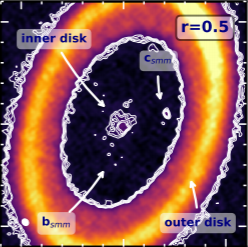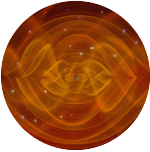Welcome to the eighth of our monthly newsletters. We will be bringing this to your mailbox around the middle of each month, to keep you informed about Planetarium and Friends news, as well as happenings in the world of astronomy and events in our area related to science education. Visit the website for more news updates and a list of our articles.

Friends of the Planetarium at the 2021 Arlington County Fair!
Don’t forget to visit the Friends of Arlington’s Planetarium booth at the Arlington County Fair! FOAP will be at booth G11 August 20th through 22nd in the indoor Fair pavilion. Stop by and say hello, get an update on planned activities, and renew your membership!
Contributed by
Kathi Overton.
How Big is a Planetarium?
Planetariums come in a variety of sizes. There are portable, inflatable versions that are as small as 3 meters (10 feet) in diameter.
☜☞
Many school and community planetariums are between 6 and 12 meters in diameter (about 20 to 40 feet). Arlington’s planetarium dome measures about 9 meters (30 feet), and can seat close to 60 audience members. Museum and science center domes are often bigger, because they need to handle larger audiences. The Liberty Science Center in New Jersey has a 27 meter (89 foot) dome, and claims to be the largest in the Western hemisphere.
☜☞
As of 2021, the largest planetarium dome in the world is in St. Petersburg, Russia. It is a whopping 37 meters (about 120 feet!) in diameter, and requires 40 video projectors to the create the image on the dome.
Contributed by
Kathi Overton.
Milky Way Season is Coming to a Close
Skywatchers can best observe our galaxy, the Milky Way, during “Milky Way Season” which runs from February through October, though here in the mid-Atlantic region, the best views are from late March to late August.
You need a clear, dark sky to see the Milky Way, so be sure to find a location away from cities and other sources of light pollution. Of course, light from the Moon will wash out the sky as well, so choose days close to the new Moon for observing.
Because of light pollution, more than 80 percent of all Americans can no longer see the Milky Way from where they live – and many may never directly observe the galaxy in their lifetime. You can see the Milky Way in the planetarium, of course – but we encourage you to find a dark sky and see the real thing at least once!
Contributed by
Kathi Overton.

Russian Module Unexpectedly Fires Thrusters After Docking to ISS
Late last month the Russian Nauka (Multipurpose Laboratory) docked with the International Space Station, after overcoming some problems
during flight. But slightly more than three hours after docking, at 12:45 pm EDT on July 29th, the Nauka suddenly, for reasons still unknown, fired its thrusters. This unprecedented officially declared emergency caused the ISS to begin to spin. The crew corrected
the situation by firing the thrusters of two other craft that happened to be also docked to the station.
Although there seems to be no damage to the ISS or its guest modules, the event could have been a catastrophe, and there are concerns about the possible slipping
of safety standards at NASA and calls for investigations.
Eight Year Old Nicole Oliveira Has Discovered Seven Asteroids
She lives in Alagoas, on the Eastern tip of Brazil, and she has been fascinated with the stars
since she was two years old. By the time Nicole Oliveira had reached the age of eight, she had discovered seven
asteroids through her participation in Asteroid Hunt, administered by the International Astronomical Search Collaboration.
Miss Oliveira is the youngest member of the Alagoas Astronomical Studies Center, and had given lectures at schools
and at the Brazilian Ministry of Science.
She has a YouTube channel where she talks
about astronomy with friends and guest professors.

Hubble Finds First Evidence of Water Vapor at Jupiter’s Moon Ganymede
By analyzing data from the Hubble Space Telescope reaching back to 1998, scientists have concluded that
its atmosphere probably contains water vapor. It is thought that this satellite of Jupiter features a vast quantity
of water, more than exists on Earth. But most of it lies far beneath the surface, and the water on the surface
is frozen solid. Analysis of spectrographic data supports the idea that the origin of the water vapor in the atmosphere
comes from sublimation from the surface ice at its hottest spots during
the warmest times of Ganymede’s day.

Astronomers spot moon-forming disk around Jupiter-like exoplanet
Although astronomers have discovered almost 5,000 exoplanets, until now they have seen no
clear evidence of a moon orbiting any of them. They’ve always thought that such satellites must exist, as they
are so common in our solar system. The widely accepted model for how moons form begins with a ring around a planet,
like the rings around Saturn. Dust in the rings coalesces under gravity to eventually create moons.
A similar process, on a larger scale, creates planets from giant rings surrounding stars. The new observations
show a giant planet-forming ring around a star 400 light-years away, a planet inside that ring, and
a moon-forming ring around the planet.
Edited by Lee Phillips


 witter
witter Instagram
Instagram



